6 Reasons to Be Psyched About the 2024 Giro d’Italia
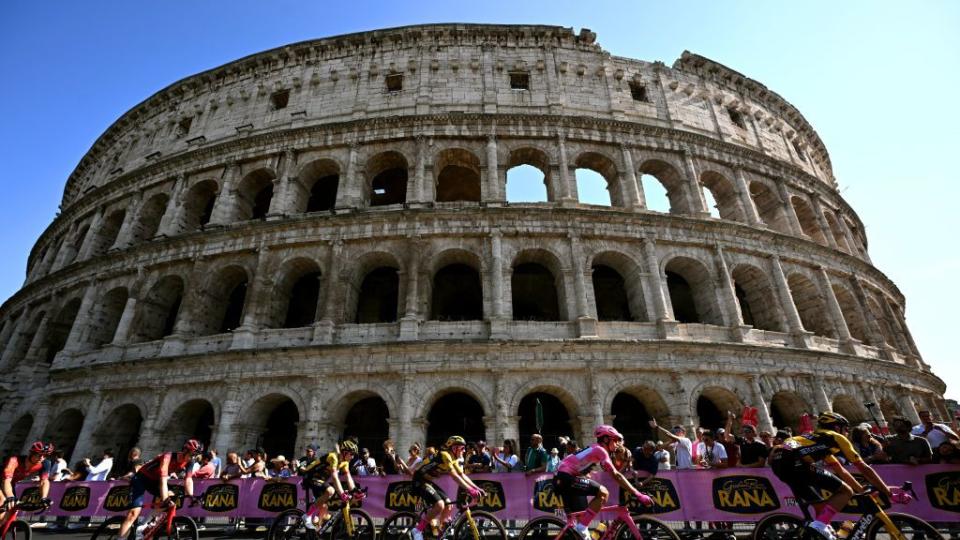
After the running of Paris-Roubaix, we’re now past the cobbled classics and just a few weeks away from the season’s first three-week grand tour, il Giro d’Italia.
The route of the 2024 Giro was revealed last October, but it was quickly overshadowed by the announcement of the route for the 2024 Tour de France. That’s a typical issue for the Italian grand tour, a race that always seems to be fighting to emerge from its French cousin’s shadow.
But it shouldn’t be: the Giro is a fantastic event in its own right, a race that offers stunning scenery and aggressive racing, and often gives us a chance to see other riders steal the limelight. Over the next few weeks, we’ll be getting you ready for the Giro’s 107th edition, starting with six reasons why we’re excited about this year’s race.
1. An Aggressive Opening Weekend
Once upon a time, the opening weekend of a grand tour was more about fanfare than competition, often with a short individual time trial (usually called a “Prologue”) followed by a flat stage ending in a field sprint. In other words: stages that had little bearing on the race overall.
Don’t get us wrong: it can be fun to watch time trial specialists square off against GC contenders in a short ITT to determine the first rider to pull on a grand tour leader’s jersey. And who doesn’t love a good field sprint? But we want to see racing, with stages that don’t allow the overall contenders to hide in the bunch, stages like the two Basque stages at the beginning of last year’s Tour de France.
Well, this year’s Giro seems to have taken a page out of last year’s Tour de France racebook, with a 143-kilometer opening stage from Venaria Reale to Turin that brings the riders over three categorized climbs, including the Category 2 Colle de Maddalena less than 25 km from the finish line—which the riders will hit just a few kilometers after cresting a punchy, uncategorized ascent just outside the city. Expect an exciting race to win the Giro’s first maglia rosa (the “pink jersey” awarded each day to the Giro’s overall leader), but time gaps that won’t kill anyone’s GC hopes on the first day of the race.
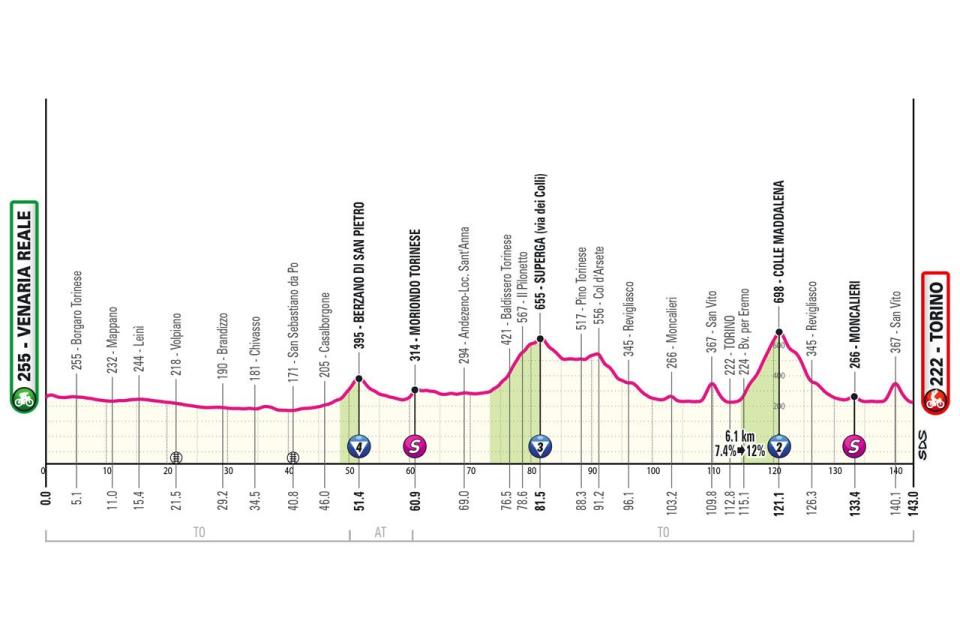
The next day could be a different story though, when a 161-kilometer stage from San Francesco al Campo to the Santuario di Oropa ends with the Giro’s first summit finish, an 11.8-kilometer climb with an average gradient of 6.2 percent. The ascent to Oropa is this year’s “Cima Pantani,” an ascent designated to honor Marco Pantani, the deceased Italian superstar who famously won a stage here in 1999.
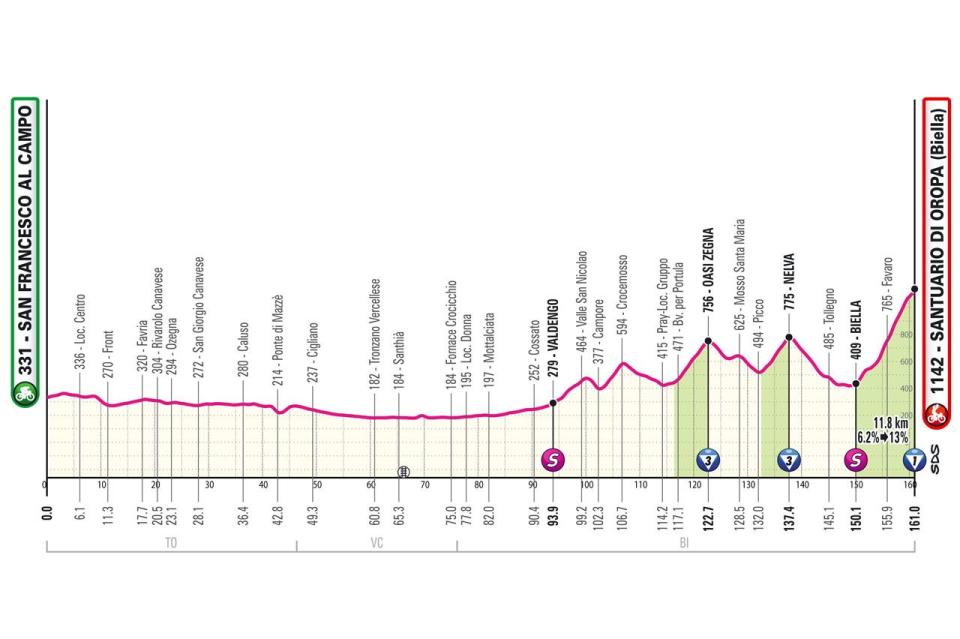
This isn’t the hardest climb in the Giro by any means, but given that it’s only Stage 2, it will start shuffling the general classification. And given one of the riders expected to be competing this year (more on that later), this could prove to be an especially impactful opening weekend.
2. Reasonable Stage Lengths
In recent years, riders have become increasingly critical of the Giro’s organizers for including too many long stages—and even longer transfers from the finish of one stage to the start of another (which means riders are on buses for sometimes two to three hours before getting to their hotels at the end of the day). That might not seem like a big deal for fans watching the race from the comfort of their couches, but how do you like it when your boss extends your workday without considering you first? What if the length of your commute was suddenly doubled or tripled?
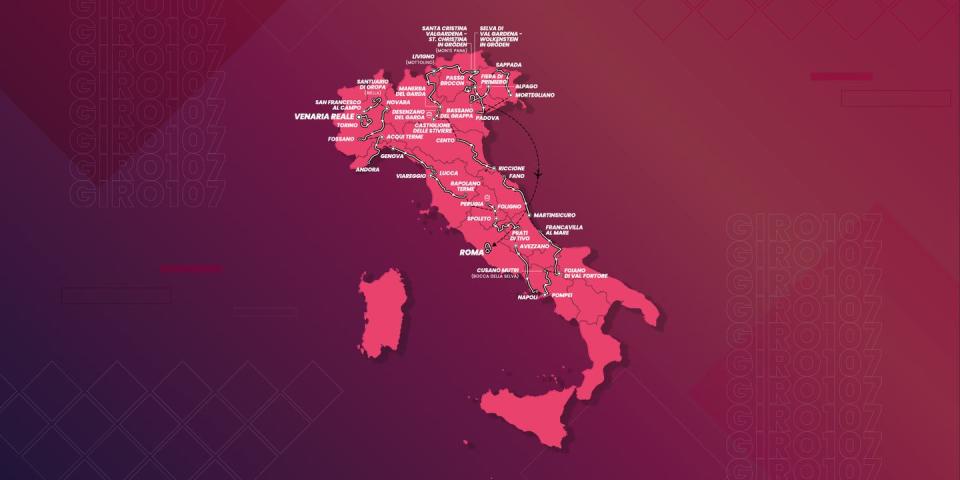
Well, the organizers listened, and this is the shortest Giro in years, with an average stage length that’s 12.5 km shorter than it was five years ago. Even better, there are fewer super-long stages. For example, in 2019, there were eleven stages over 190 km, and eight of them went over 200 km. This year’s race has just four stages over 190 km and only one of them comes during the Giro’s final week, which is traditionally the hardest of the race.
That’s great for the riders, but it’s also a boon for fans, who have annually been “treated” to at least one or two Giro stages in which a large breakaway gets a huge lead on an otherwise disinterested peloton—or worse, stages in which the entire peloton decides to ride piano until the final hour, at which point they wind things up for an eventual field sprint. Stages like these are the cycling equivalent of watching paint dry.
Shorter stages produce more aggressive racing, and shorter transfers mean happier, better-recovered riders—which also means better racing. With shorter stages and more reasonable transfers, we’re expecting this to be one of the most exciting Giros–from start to finish–in years.
3. A Surprising Feast for Sprinters
A race known more for its mountains, the Giro rarely attracts large numbers of sprinters—at least not as many as the Tour de France usually does. But with eight stages expected to end in field sprints this year—and a particularly mountainous route at the Tour de France—the 2024 Giro d’Italia is shaping up to be one of the more sprint- and sprinter-heavy grand tours in the past few years.
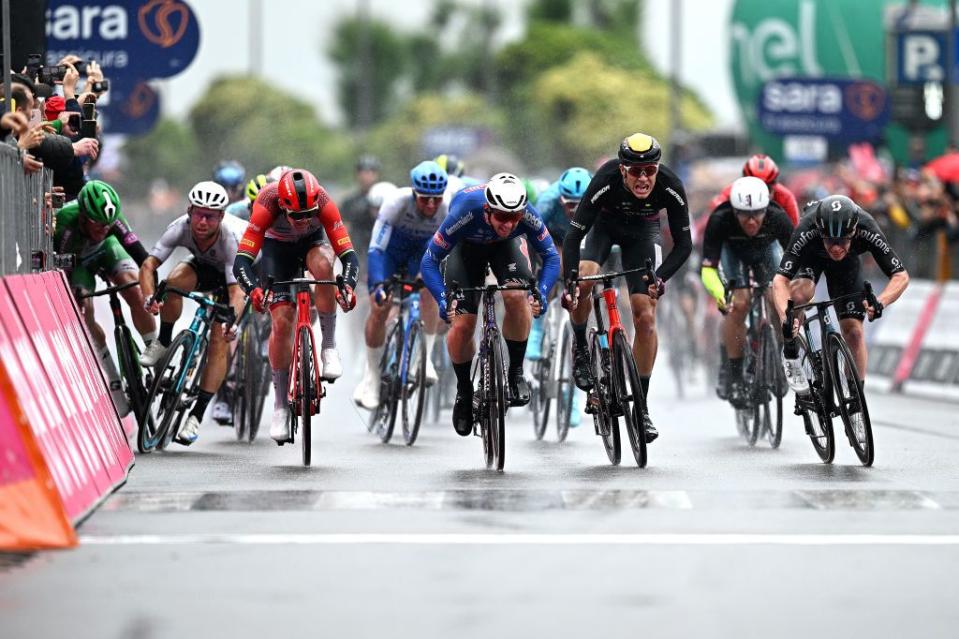
Here’s an early look at the list of sprinters expected to take the start in Torino: Italy’s Jonathan Milan (Lidl-Trek); Belgium’s Tim Merlier (Soudal–Quick Step) and Gerben Thijssen (Intermarché-Wanty); Dutch sprinters Olav Kooij (Visma-Lease a Bike) and Fabio Jakobsen (DSM-Firmenich PostNL), and Australia’s Sam Welsford (Bora-Hansgrohe), Caleb Ewan (Jayco AlUla) and Kaden Groves (Alpecin-Deceuninck). That’s a deep line-up, and it should produce some of the most exciting field sprints of the season.
4. Gravel!
The Giro d’Italia has always embraced gravel roads. In 2005, the organizers took the race up and over the Colle delle Finistre, a climb in the Italian Alps that’s famous for an eight-kilometer section of gravel approaching the summit of the pass. The Giro has included the climb four three since 2005, most famously during Stage 19 in 2018 when Great Britain’s Chris Froome went on an 86K solo raid, overcoming a 3:22 deficit to take the maglia rosa. He won his first and only Giro in Rome two days later.
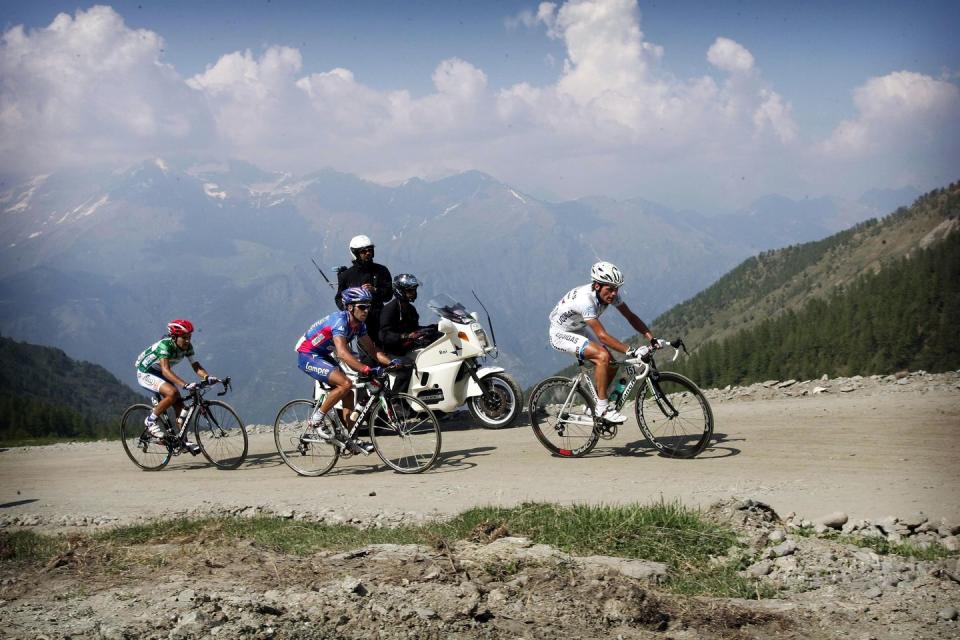
In 2010, the Giro was one of the first grand tours in the modern era to introduce gravel roads on a non-mountain stage when the organizers took a page out of the Strade Bianche road race and included several sections of white gravel roads near the end of Stage 7, a 220-kilometer ride from Carrara to Montalcino. Australia’s Cadel Evans won the stage; the former mountain biker seemed at home on the white gravel roads, which had turned brown due to heavy rain.
This year’s race won’t go over the Finistere (yeah, we’re bummed too), but it will bring the riders over about 12 km of punchy, gravel roads during the second half of Stage 6. The 177-kilometer stage from Viareggio to Rapolano Terme comes just before the Giro’s first time trial, and should present a perfect opportunity for an ambush, possibly by a rider who doesn’t fancy his chances in the next day’s race against the clock.
5. Lots of Mountains
It’s the mountains that keep everyone coming back to the Giro d’Italia (or, in the case of a few of the riders, staying away). This year’s race is no different, with 42,900 meters of elevation gain over the course of the Giro’s 21 stages and seven uphill finishes (including the climb at the end of Stage 7’s ITT). That’s a lot of climbing, and the organizers, as always, have included some of the most famous ascents in Giro’s history.
We’ve already mentioned the Oropa—this year’s Cima Pantani—at the end of the Stage 2, but that’s not the only summit finish of the first week. After Stage 7’s uphill ITT finish there’s another summit finish on Stage 8, on the Category 1 climb to Prati di Tivo, a 14-kilometer ascent with an average gradient of 7 percent. Expect these two stages to determine which rider will wear the maglia rosa heading into the Giro’s first rest day.
The second week begins with a new summit finish on Stage 10, the Category 1 Bocca della Selva, a 20.9K climb with an average gradient of just 4.6 percent. But that’s misleading: for some reason, the “official” climb begins with over 3 km of downhill roads, which lowers the average gradient overall.
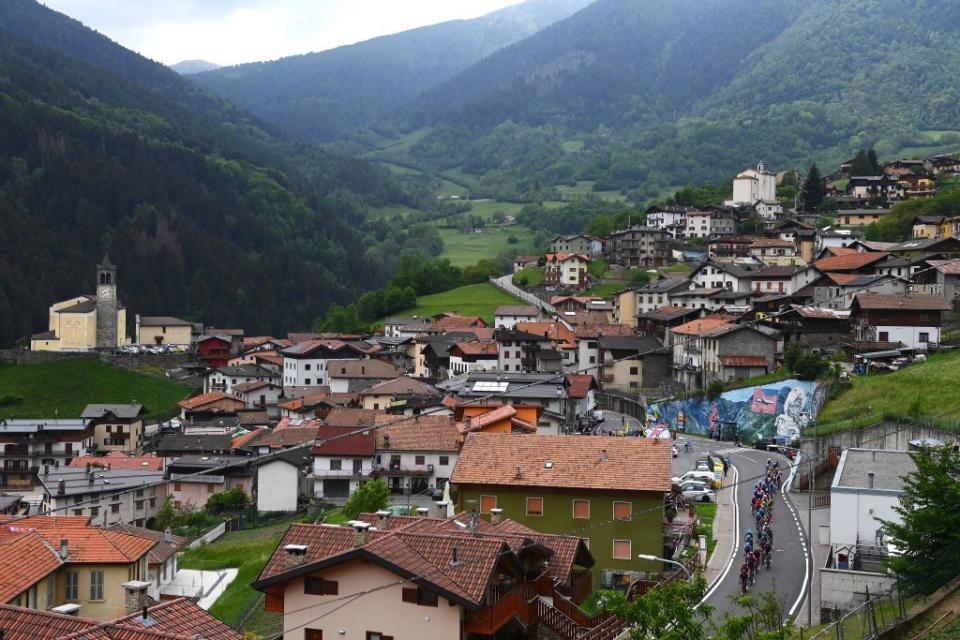
The second week ends with Stage 15, which might be the hardest in this year’s Giro. Originally slated to bring the race into Switzerland for a hot sec, the route of this 220-kilometer stage has been altered to keep the race in Italy. That’s bad news for the riders, as they now will face the Mortirolo—one of the hardest and most famous climbs in Giro history—two-thirds of the way through the stage. The day ends with back-to-back Category 1 ascents: the Passo di Foscagno and—after a very short descent—the final climb to the Mottolino ski resort above Livigno, a steep, 8-kilometer climb with pitches that hit 18 percent. Thank goodness the next day is a rest day!
But after the second Rest Day, the riders won’t have a chance to ease themselves back into action, as Stage 16—another stage over 200 km—begins with an ascent of the Stelvio (20.2 km at 7.2 percent). Topping out at 2,758 meters, this is the highest climb in the entire Giro, and the first rider over the summit will win the Cima Coppi prize for being the first to the top. There’s a long ride from the top of the pass down into the valley, but two hard climbs at the end of the stage will settle things once and for all.
Stage 18 takes the race into the Dolomites on a 159-kilometer route containing five categorized climbs, including ascents of both sides of the Passo Brocon, with a summit finish on the steeper side of the mountain. And just for good measure, Stage 20 heads back into the Dolomites, where the riders will climb the Monte Grappa (18.1 km at 8.1 percent) twice. This one doesn’t end with a summit finish, but after 20 days of racing and at the end of another ferocious final week, this stage should blow the peloton apart. At the end of the day, we’ll know the eventual winner of the 2024 Giro d’Italia.
6. Pog Goes for Pink
But by far, the biggest marquee rider on this year’s start list has to be Slovenia’s Tadej Pogačar (UAE Team Emirates). Perhaps the most exciting rider in the entire men’s peloton, Pog can win it all: grand tours, cobbled classics, and week-long stage races. He’s the most complete and multi-faceted male rider we’ve seen in decades, and this year—for the first time in his career—he’s heading to Giro.
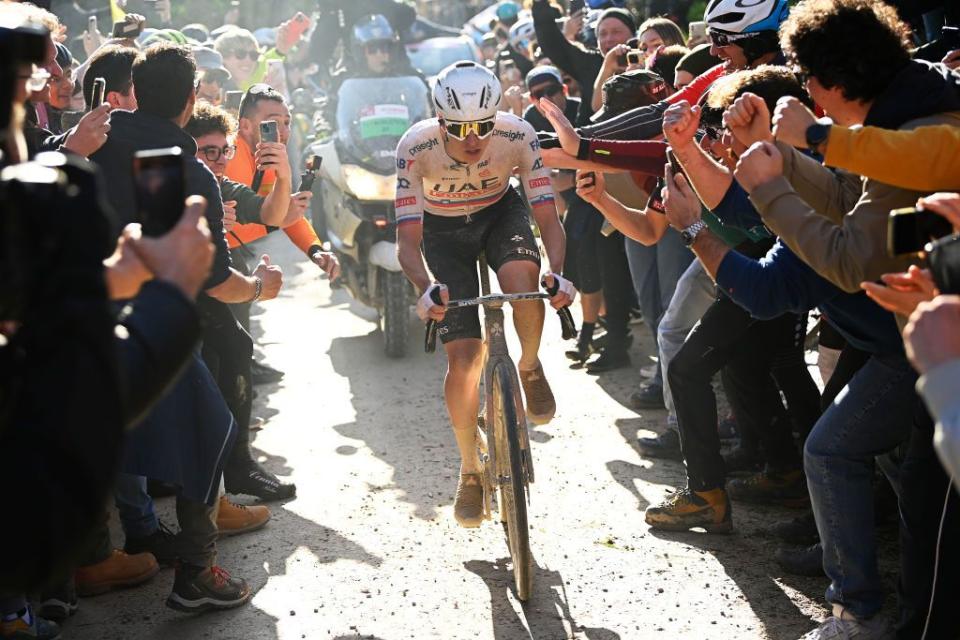
Yup, that’s right. The 25-year-old has made it a career goal to win every major race on the calendar. For example, the two-time Tour de France champion took a dominant victory in last year’s Tour of Flanders, a cobbled Monument that grand tour riders usually avoid. And in March, he stated his desire to win all seven of the sport’s major week-long stage races (he’s already won three of them).
This is a far cry from just a decade or two ago when riders rode super-specific programs, often only targeting one or two major events each season. This was especially the case with riders targeting the Tour de France. These riders cared less about winning as many races as possible and more about building fitness for the Tour de France—without crashing or getting sick (which, as recent events have shown us, is a delicate balance).
But we’re talking about Tadej Pogačar, a rider who cares more about winning as many races as he can than winning one or two races as many times as he can. And at 25, he can race a diverse program right now and still decide to specialize a few years from now.
Given the way he’s riding—having raced nine times this season and only finishing off the podium twice, and doing so with no real challengers—he could blow the doors of the Giro by the end of the first week. And that might be a good thing: in addition to winning the Giro, Pog also wants to become the first rider since Pantani to win the Giro and the Tour in the same season.
Jumping out to an early, insurmountable lead would allow Pogačar to sit back and ride defensively, possibly saving him important matches in what has suddenly become (after the recent crash at the Itzulia Basque Country) a rather winnable Tour de France for someone having already raced the Giro. Now, that would be historic!
You Might Also Like

